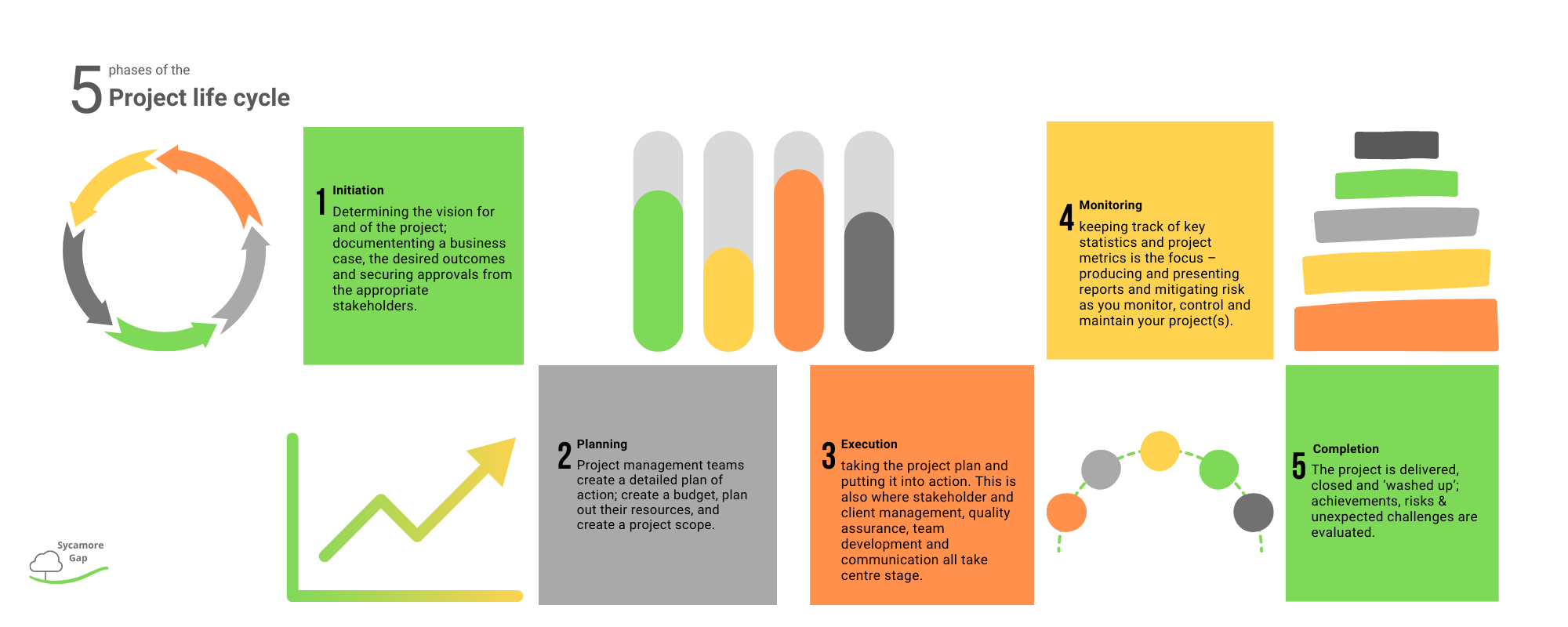Understanding the project life cycle is vital to ensuring the overall success of the projects in your portfolio. So, what is the project life cycle and what does it involve?
What is the project life cycle?
Put simply, the project life cycle describes a series of steps or phases project managers need to go through in order to successfully deliver a project.
Typically, there are 5 phases or steps to any project life cycle that require a number of processes and tasks to be completed in order to reach success.
These are:
Initiation – The initiation phase determines the vision for and of the project; documententing a business case, the desired outcomes and securing approvals from the appropriate stakeholders, as well as providing deliverables, objectives, and timelines; paying attention to the perceived or possible risks involved, and estimated costs.
Planning – The planning phase of the project life cycle is arguably the most important, as it sees project management teams create a detailed plan of action; create a budget, plan out their resources, and create a project scope. What’s more, this phase tends also to involve the whole project team and other departments in order to ensure everyone involved and responsible for the project approves and has the same understanding(s) of the project objectives.
Execution – Then comes executing the project; taking the project plan and putting it into action. This is also where stakeholder and client management, quality assurance, team development and communication all take centre stage to ensure the project runs to time, budget and those all-important expectations.
Monitoring – In this phase, keeping track of key statistics and project metrics is the focus – producing and presenting reports and mitigating risk as you monitor, control and maintain your project(s).
Completion – The completion phase is where the project is delivered, closed and ‘washed up’; where the project(s) is finished and those involved are called to meet to go through any achievements, risks & unexpected challenges, and any elements that could be improved during the next project.
These 5 phases are tried and tested to aid in the successful completion of projects and created to support project teams to get the most out of their projects.
And to ensure that the project life cycle is executed efficiently; supporting all project phases whilst providing project teams with a way to communicate, and track KPIs, we’ve created Sycamore Gap’s pre-built PMO solution.
To find out more about our PMO software, please visit our benefits page or book a demo.
Alternatively, sign up to our email newsletter for regular news & updates.

